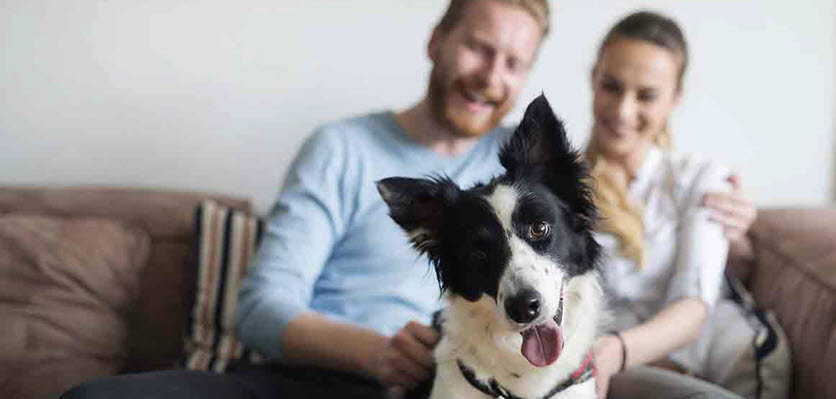Pets and people living together

There are many benefits to owning a pet.
Pets help keep individuals healthy, teach responsibility and provide companionship.
Many people say that they keep a pet to provide friendship and love
Pets don’t just make people who own them feel good; they can create a positive ripple effect that extends into the broader community.
Whatever the reason you have for keeping your pet, it’s all about the harmonious interaction of people and pets living together
“With concerns growing both within Australia and around the globe regarding the erosion of community and social capital, and accumulating evidence of the impact of social and psychosocial factors on health and wellbeing, pets are emerging as valuable and positive features in community and neighbourhood life”.( Dr. Lisa Wood)
Community
While pets in the community can sometimes cause a degree of a nuisance, studies demonstrate that the closer the bond between animal and owner, the more responsible the owner is likely to be, with pet nuisances less likely to arise.
The benefits of building happy, healthy and active communities are well recognised.
Companion animals can play a part in plugging people back into their community, be it through getting people out volunteering, exercising or interacting socially with others.
Pets are right under our noses and available to help us, all that is required is a little-concerted thought in discovering the best ways to utilise them and reap benefits for the whole community.
Health
Walking and physical activity are strongly linked to improved general health and lower risks of obesity, heart disease, and blood pressure problems.
Many studies now associate pets, and particularly dogs with increased levels of physical activity.
Australian research indicates that not only do dogs motivate their owners to walk more often and meet recommended levels of physical activity; but also that children who own dogs are less likely to become overweight or obese.
With obesity also a growing problem among the pet population, dogs themselves stand to benefit from regular healthy exercise.
Dog walkers are also more likely to experience social contact and conversation than those that walk alone.
Similar findings have been demonstrated in an Australian study where half of all dog owners indicated that they had come to know locals in their suburb as a result of walking their dog.
Pets are a great leveler, transcending racial, cultural, geographical, age and socio-economic boundaries in terms of their ownership and impact.
Pets have also been shown to bring therapeutic benefits and pleasure to many people who are not in a position to own or fully care for one on their own.
Animals and pets play an increasingly important therapy role in a range of healthcare settings including children’s hospitals and nursing homes.
Evidence indicates that animal-assisted therapy can be an effective complement to other forms of medical treatment and care.
It also provides a source of interest and social interaction for patients and a rewarding experience for volunteers.
In the workplace
In Australia, the dog on the back of the tradesman’s ute is the most iconic form of pets in the workplace, but other less visible examples include the nursing home with its visiting cat, the hairdressing salon with the sleeping dog in the corner, and the garden nursery with its wandering parrot.
While not always possible or practical, with a bit of lateral thinking, it can be both possible and positive to include pets in the workplace.
Pets and people can live in harmony together and the benefits are far-reaching for all parties
Indigenous communities
In Indigenous communities, dogs are an important part of life, but they are viewed differently to the way we consider our pets.
For most Indigenous people the dog is just a good friend. Dogs are seen as protectors. There are many different levels of affection that people have for dogs and the importance and role of dogs vary between Indigenous peoples.
They are used for warmth in the winter and over time have provided protection and companionship, minded children and were used as hunters.
Dogs often live with Indigenous people, sharing beds and food and have close contact with children. This can cause concern for health and safety reasons.
Sick or untrained dogs can pose a risk to human health. Children who have close relationships with pups are at increased risk of certain diseases as they may play in areas contaminated with dog urine or faeces.
They are also in danger of injury through attacks.
In communities that have undertaken a dog program, there is a sense of pride in the health of their dogs and increased awareness of health issues in the community.
Dogs found in Indigenous communities are divided into four categories:
Domesticated dogs
- Have an owner who takes good care of their dog
- Are easy to handle and treat
- Are usually in the minority
Camp Dogs
- Have an owner and live and move around with the owner and their family
- Are usually unfriendly when handled and timid when approached
- Tend to be easier to treat with oral medications than injections
- Are the largest group of dogs in the community
Fringe camp dogs
- Appear to have no owner and no home
- Scavenge for food
- Fight with other dogs
- Are very timid and can’t be handled or treated for a health problem
Dingoes and wild dogs
- Live in the bush
- Scavenge for food at campsites
- Mate with community dogs, resulting in many crossbreeds
A dog program is designed to improve the health and well-being of all four categories of dogs and the general community
Any such program needs to address the concerns of the community and must be shaped by the community and include qualified veterinary staff
